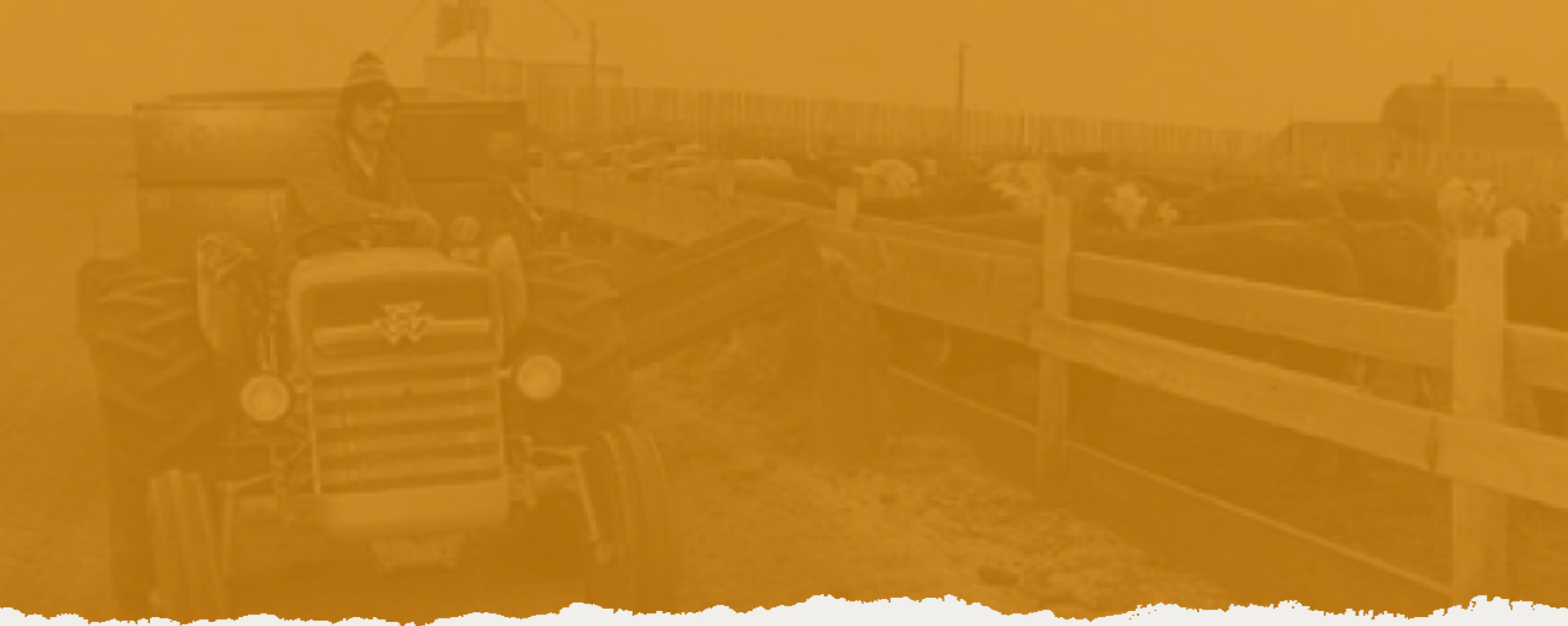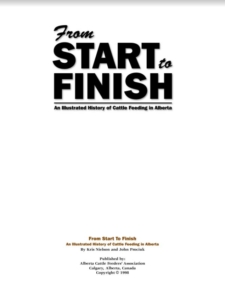In the beginning
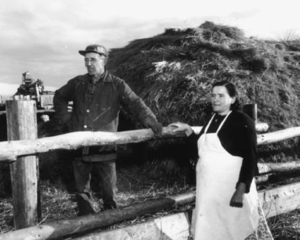 The story of the cattle industry in Alberta is a vibrant and vitally important piece of Canadian history. The potential of cattle ranching sparked the imagination of visionary people, compelling them to introduce livestock to Alberta’s foothills and prairies. The industry soon became the heartbeat of economic life for many and was instrumental in the development of a distinct and proud Alberta culture.
The story of the cattle industry in Alberta is a vibrant and vitally important piece of Canadian history. The potential of cattle ranching sparked the imagination of visionary people, compelling them to introduce livestock to Alberta’s foothills and prairies. The industry soon became the heartbeat of economic life for many and was instrumental in the development of a distinct and proud Alberta culture.Alberta’s commercial feedlots sprung to life in the late 50s with the founding of Western Feedlots near Strathmore, Alberta. An increasing population provided limitless possibilities for beef cattle production in North America, and offered the promise of stable and profitable markets for cattle from Alberta feedlots.
The birth of large-scale Alberta cattle feeding operations
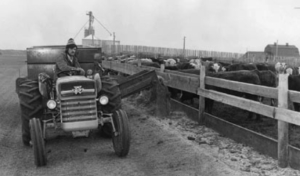 Farm units became larger and risk of loss grew significantly, resulting in an increase of livestock sharing, feeding, and leasing arrangements. Cattle owners needed more feed, facilities, and labour than they could easily afford or risk, while farmers and landowners who had extra pasture, grain, facilities, and labour needed to use these resources to greater advantage. Logic dictated that the pooling and sharing of resources through feeding arrangements would minimize risk. As a result, the evolution of large-scale cattle feeding in the sixties was due to this emergence of more specialized and integrated sectors.
Farm units became larger and risk of loss grew significantly, resulting in an increase of livestock sharing, feeding, and leasing arrangements. Cattle owners needed more feed, facilities, and labour than they could easily afford or risk, while farmers and landowners who had extra pasture, grain, facilities, and labour needed to use these resources to greater advantage. Logic dictated that the pooling and sharing of resources through feeding arrangements would minimize risk. As a result, the evolution of large-scale cattle feeding in the sixties was due to this emergence of more specialized and integrated sectors.The birth of large-scale Alberta cattle feeding operations
Early 60s
Cattle feeding was in full swing by the early 60s and, in addition to cash returns, specialization in the feedlot industry promoted:
- – Soil conservation and adequate waste disposal
- – A wise use of forage and other crops
- – A profitable way to manage labour and capital
late 60s
By the late 60s the modern feedlot represented a complete break with the early range traditions. By 1967, no phase of beef cattle raising had advanced as fast as cattle finishing, due to consumer demand for higher grade beef, and the grain glut.
late 60s
1970s through 1990s
During the 1970s to the 1990s, the cattle feeding industry in Alberta experienced steady growth. Eventually the highest concentration of feedlots in all of western Canada was found south of the Trans-Canada Highway that runs though Calgary. Not surprisingly, the majority of large packing plants were established in the same area, as their proximity to cattle sources improved efficiency.
There was also a recognizable trend toward large custom lots feeding the majority of the province’s cattle. By the mid-eighties, only about one in ten feedlots had a capacity for more than 10,000 cattle, yet that group fed almost forty percent of the cattle in the province. In other words, most cattle owners owned only a few feeders, and a relatively small number of cattle feeders had a large number of animals.2000s
As industry insiders began to worry about Canadian beef’s competitiveness, the underlying issues became more apparent. Despite cheap feed grains and the opening of new markets, Canada was steadily losing ground to U.S. production. This concern, however, was only a prelude to the challenges that lay ahead.
The outbreak of BSE had a profound impact, especially on cattle feeders. These margin players were hit hard by plummeting prices. Unlike cow-calf producers who could hold onto their stock in hopes of a market rebound, cattle feeders had no way to mitigate their losses.
The U.S. border reopened to boneless beef from cattle under 30 months of age (UTM), but cattle feeders still couldn’t transport live cattle across the border. This situation allowed packers to seize the opportunity to ship boxed meat. Consequently, the surplus of cattle waiting for processing forced feeders into fierce competition for packing plant hooks, driving prices even lower.
Hopes for a quick return to normal post-BSE were dashed. Negotiating re-access with previous trade partners would take many years, and regaining negligible risk status from the World Health Organization would take nearly two decades. With many markets closed or restricted, the mid-2000s were challenging years for cattle feeders.
Frustration led feeders from across the country to unite and collaborate.
2000s
The Future
The practice of cattle feeding has evolved from the early and relatively simple strategy of allowing cattle to roam and graze on seemingly endless grassy rangelands, to a state-of-the-art modern industry, featuring custom feedlots that rely on the latest machines, technology, and scientific research. This evolution is a product of many intersecting factors:
- – The sheer bounty but inevitable limitations of Alberta’s natural resources
- – Industry strategies
- – The successes and failures of cattle feeders over the years
- – The demands of the marketplace
Alberta’s cattle feeders play a vital role in Canada’s beef production and are committed to providing safe, healthy, and high quality food in a socially responsible manner. Our priority is to be the experts on antimicrobial use, food safety, and consumer preferences. We are leading the charge on increasing the global presence and influence for the Canadian beef industry.
We know it is imperative that we use all available resources to keep science in the forefront of conversations to achieve alignment on what sustainability means in the beef industry. Going forward, we will continue to provide consistent, science-based messaging. We are conscious that we can’t let our foot off the gas on the long-term strategies that keep our cattle feeding operations safe and profitable.
From Start to Finish
An Illustrated History of Cattle Feeding in Alberta

